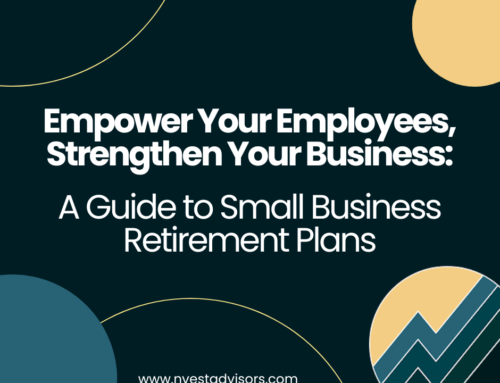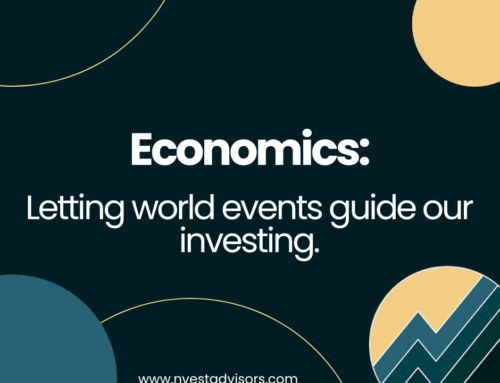Investing can be a rewarding journey toward financial growth and security, but it’s not without its challenges. One of the most significant obstacles investors face is the influence of cognitive biases. These biases, which are often hardwired into our brains, can lead to irrational decisions that negatively impact our investment outcomes. Over the years, we’ve witnessed the many ways that investors subconsciously sabotage their own relationship with money, and a large part of our job as your financial coach and guide is to help you avoid these all-too-human pitfalls. In this blog post, we will delve into five of the most common cognitive biases that can hinder investors and explore strategies to overcome them (which is often easier said than done without the help of a seasoned financial fiduciary):
Confirmation Bias: Seeking Validation
Confirmation bias occurs when investors actively seek out information that confirms their existing beliefs while ignoring or downplaying contradictory evidence. This bias can lead to overconfidence, allows you to unintentionally end up in a and prevent investors from making well-informed decisions.
By far, this is the most common bias we encounter every day in our presently polarized, tribal political world, but it’s also true in other areas of our lives. Do you find yourself watching only one news channel, because you agree with its political slant? Do you automatically dismiss someone simply because you disagree with them on a particular issue? Have you unfriended or unfollowed people online because of political differences?
Confirmation Bias affects investors in significant ways, too. Are you strongly convicted one way or the other about cryptocurrencies? Gold? Do you believe stocks are headed up in the next six months, or down in the next six months? We all seek out validation for what we already believe to be true and automatically dismiss information and opinions that challenge our worldview.
Solution: To combat confirmation bias, investors should actively seek out diverse viewpoints and engage in rigorous research. Maintain a healthy skepticism towards your own assumptions and regularly challenge your investment thesis. Consider forming an investment committee or seeking advice from trusted sources to ensure a well-rounded perspective.
Loss Aversion: Fear of Regret
Loss aversion refers to the tendency to strongly prefer avoiding losses over acquiring gains of equal value. This bias can lead investors to hold onto losing investments longer than they should, missing out on better opportunities. It can also make you wait far too long to get into a rising market because you’ve had a bad experience previously.
Solution: To counter loss aversion, establish clear investment criteria and exit strategies before entering a position. When we work with clients, we do this as part of what is called creating your Personal nVestment Policy. Then, regularly review your portfolio with a focus on the fundamental reasons behind each investment. Embrace the mantra “cut your losses, let your winners run,” and be prepared to make difficult decisions when necessary.
Anchoring Bias: Fixation on Past Information
Anchoring bias occurs when investors rely too heavily on the first piece of information they encounter when making decisions. This can lead to underestimating or overestimating the true value of an investment. This is very similar to Recency Bias, in which far too much emphasis is placed on the most recent event, information, or announcement, without stepping back and taking all of the information into account.
Solution: Avoid anchoring bias by conducting thorough research and basing your investment decisions on a variety of relevant and up-to-date information sources. Be open to adjusting your valuation estimates based on changing market conditions and new insights.
Overconfidence Bias: Illusion of Control
Overconfidence bias leads investors to overestimate their ability to predict future market movements or make successful investment choices. This can result in excessive trading, poor diversification, and unnecessary risk-taking. It’s what creates the emotional roller coaster that commonly causes investors to “buy high and sell low”, which is the exact opposite of what they should be doing:
Solution: Maintain a realistic assessment of your investment skills and acknowledge that market outcomes are inherently uncertain. Focus on building a well-diversified portfolio that aligns with your risk tolerance and long-term goals. Regularly review and adjust your portfolio to ensure it remains aligned with your investment strategy.
Herding Behavior: Safety in Numbers
Herding behavior refers to the tendency to follow the actions of a larger group, often driven by the fear of missing out or the assumption that the crowd must be right. This bias can lead to buying at market peaks and selling at troughs.
Herding behavior is probably the second-most common bias we see when working with clients. When your friends are all talking about a particular investment, you’ll want to join in, even if that investment falls completely outside your risk tolerance or investing goals. Herding often leads to another bias that can really harm your investing success: Fear Of Missing Out (FOMO). Fearful that everyone is getting a piece of something and there will be nothing left for you, it’s common to see investors chase returns by investing in something that’s already experienced its full measure of gain
That’s not to say that simply being contrarian for its own sake is a viable solution, either. Deliberately going against the herd tends to be a form of Overconfidence Bias. There needs to be a delicate balance of first acknowledging that humans do tend to “move in herds”, and that doing so can affect markets one way or the other if there is sufficient conviction in the group’s sentiment, but the herd’s primary motivation is emotional, not rational response to facts.
Solution: Counter herding behavior by developing a disciplined investment plan that is grounded in your individual financial objectives and risk tolerance. Surround yourself with a network of knowledgeable and experienced investors – and a seasoned professional – who can provide valuable insights and support your decision-making process.
The Bottom Line
Recognizing and overcoming cognitive biases is an essential skill for successful investing. By understanding the impact of biases such as confirmation bias, loss aversion, anchoring bias, overconfidence bias, and herding behavior, you can make more rational and informed decisions. Through disciplined research, objective analysis, and a focus on long-term goals (and yes, the help of a trained, seasoned professional who is well-versed in behavioral finance and the damage that our biases can do to our journey), you can learn to navigate the complex world of finance with greater confidence and achieve their desired financial outcomes. Remember, the key to successful investing lies in maintaining a clear and rational mindset while staying true to your unique investment strategy.
Want to know your Risk Tolerance? Take our FREE 15-question quiz today.
nVest Advisors specializes in helping working-age, professional families and small businesses start their financial journey, grow every step of the way, anticipate and correct setbacks, and celebrate with you when we reach the top together. Your success is all we care about, and helping you overcome the perils along the journey to financial freedom, including the times when you may be your own worst enemy, is how we spend our day. It’s genuinely a privilege to help families and small businesses who want tomorrow to be better than today.
Reach out to us for a totally free, totally no-risk portfolio checkup today if you’re concerned about where your finances sit for the coming recession, particularly if you are at or approaching retirement age. A review of your current risk in relation to your tolerance will be a key part of it. We’re delighted to offer you our thoughts. You can schedule that time with us below:




